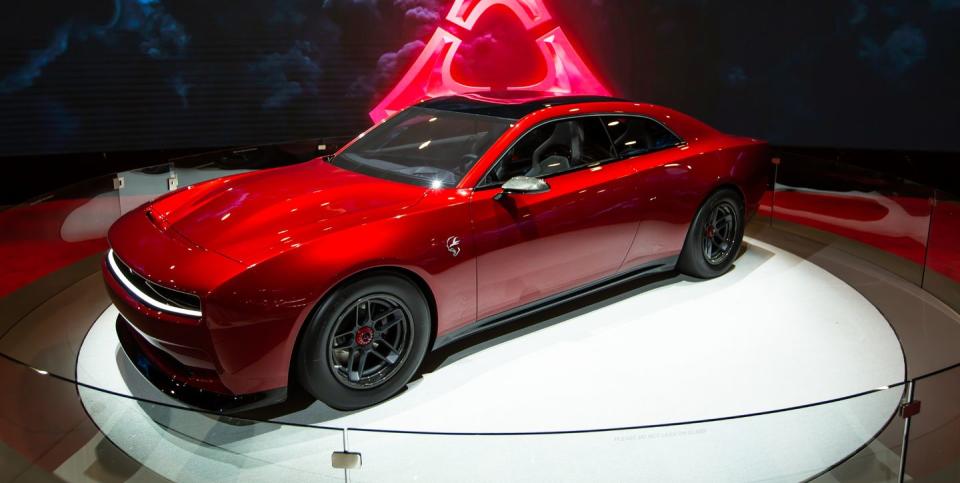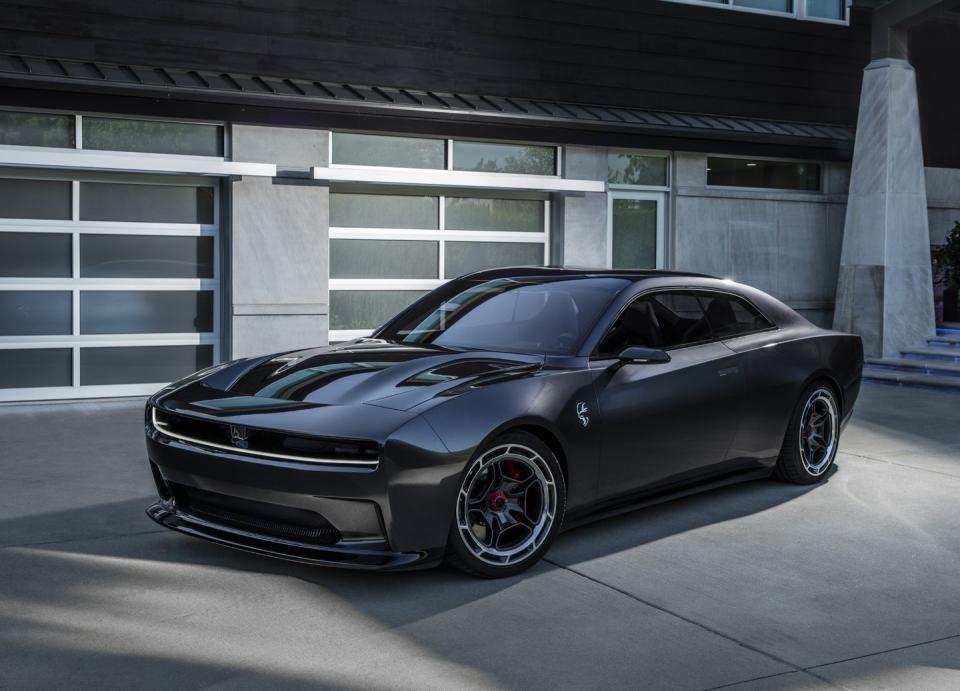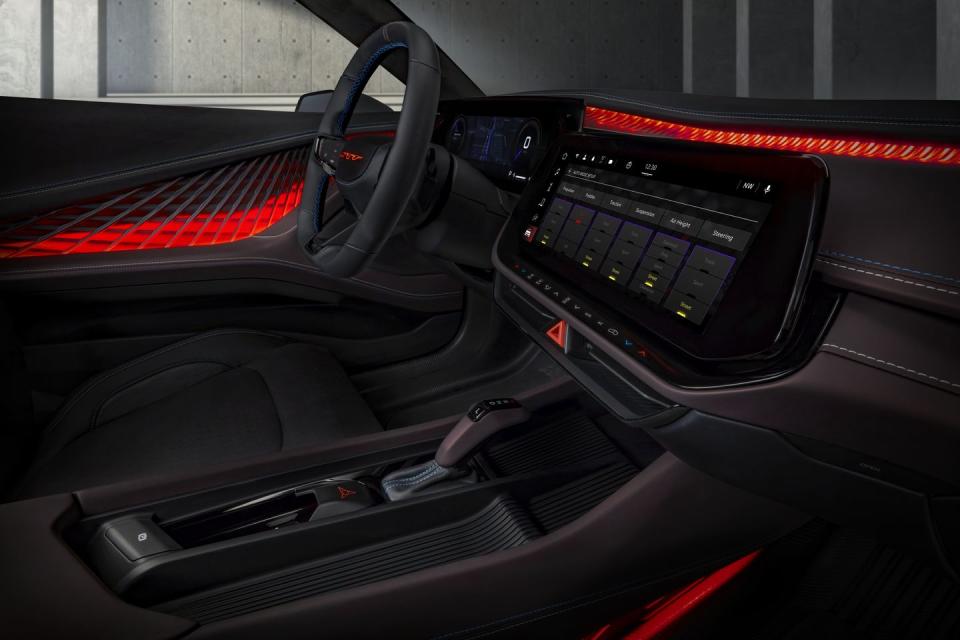How Dodge Will Make All Its Muscle Cars Electric

Stellantis has laid out a plan that spans all 16 makes under its corporate umbrella, with all cars, trucks and SUVs riding on four BEV platforms, with Dodge muscle cars on what’s called the STLA Large platform.
Stellantis will make 50% of its cars electric by 2030, including electric muscle cars.
The current Hemi-powered crop of Dodge muscle cars will be gone by the end of next year.
Muscle car maker Dodge will continue making muscle well into the future, even when that future becomes electric.
At last week’s SEMA show, Dodge put its all-electric Charger Daytona SRT Concept car front and center in an exhibit that was otherwise packed with big gasoline V8-powered traditional fire breathers. The message was clear, even to the diehard traditionalists who populate the SEMA show: Mopar and muscle will survive into the planet’s electric future.
“We’re not designing an electric car,” said head of Dodge Product Tom Sacoman, standing next to the Charger Daytona SRT Concept. “We’re designing a muscle car that happens to be electric.”

Dodge’s plans are part of overall parent company Stellantis’ goals of electric conversion.
“The global auto industry is driving toward electrification and Stellantis is in full execution mode with a comprehensive electrification strategy to deliver exciting, class-leading vehicles for our iconic brands that offer advanced technology at affordable prices,” Stellantis said in a statement earlier this year.
“We are setting the course for 100% of sales in Europe and 50% of sales in the United States to be battery-electric vehicles (BEVs) by the end of this decade,” Stellantis said earlier this year. “And we plan to offer more than 75 battery-electric vehicle models and reach global annual BEV sales of 5 million units by 2030.”
That’s not just PR- and marketing-speak. Stellantis has a specific plan for its coming EVs.
“We will sundown the Hemi muscle cars end of ‘23,” said Sacoman. “Done. And we are already making (future EVs). Obviously, you see this concept (the Charger Daytona SRT Concept eight feet away from him on the Dodge stand at SEMA). We’re already there, moving towards electrification in the future. This (the concept) is an all-electric car. It will be launched over a number of years starting in ‘24. As we launch over a number of years, we will launch additional versions of electrification into the vehicle.”
Stellantis has laid out a plan that spans all 16 makes that are currently under the corporate umbrella, from Abarth and Alfa Romeo to Ram and Vauxhall. The strategy is to use three all-electric, modular unibody platforms and one body-on-frame platform for everything. Each platform can be sized appropriately as needed. The full BEV platforms will be called STLA Small, STLA Medium, STLA Large, and STLA Frame. Battery packs will offer ranges from 300 miles to 500 miles. The muscle cars that come from the Dodge Charger Daytona SRT Concept will ride on the STLA Large platform and will offer a range of up to 500 miles. It will operate on an 800-volt system and will use a multi-speed electro-mechanical transmission.

“In our showrooms in North America, we have multiple brands,” Sacoman said. “Those multiple brands allow us to really focus each one of the brands on what they’re about, right? For Ram, it’s about capability. For Dodge it’s about muscle and performance.”
But does Sacoman really think the traditional Dodge muscle car buyer can pivot to electrification?
“I do. I do. I think some people will be early adopters, just like any other technology change. For some people, that (transition) will take more time. There are still horses, right? People buy them, they’re very valuable. But I think that overall, the whole deal, from our perspective, is to make sure that we make a better car than the last one we made. We always talk about the analogy of carburetors and fuel injection. Fuel injection was a scary technology, ‘Ah, they don’t run right, they don’t do this,’ whatever. ‘We like carburetors, we can put jets in them…’ Then guess what, (fuel injected) cars came out that were very reliable, they were better for performance. And the performance people said, ‘Hey, I have to have that.. Now I need to have the fuel injection.’ The same thing is going to happen here.”
And looking at the striking Dodge Charger Daytona SRT Concept at SEMA, is that close to Dodge’s plans for a transition? Could we expect to see something like that?
“For sure. We want this concept to indicate, to be a good indicator of what the future is going to be. Absolutely.”
So make the transition, Mopar lovers—it may even be easier than going from carburetors to fuel injection. Or at least from horses to cars.
Do you think enough Dodge fans will support the EV transition, making for a viable business case for the brand? Please comment below.

 Yahoo Autos
Yahoo Autos 